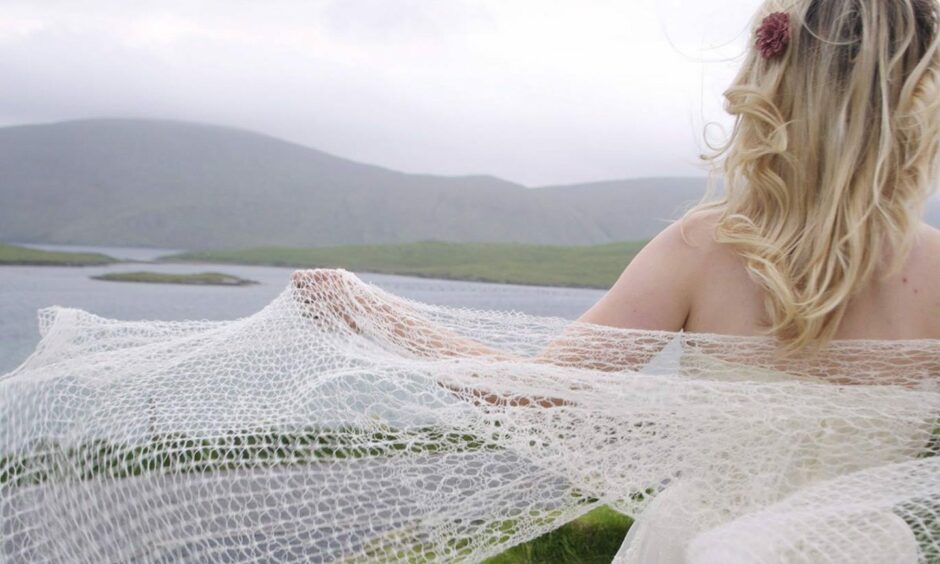
When jeweller and proud Shetlander Karlin Anderson told me all the babies in her family have their photo taken with a lace shawl stretched out behind them, I instantly thought of those on my own family’s walls.
I’ve always focused more on the little scrunched up face in the centre, the kicking legs, the bright white Christening gown than on the fabric in the background.
But the older I get, the more keen I am to learn more about my Shetland heritage.
My mum lived in Lerwick until she was 17 and moved to the mainland for university, but the rest of her side of the family – bar my uncle who fell in love in Copenhagen – are still living there.
Moving back through the years, they were farmers, crofters, fishermen, the lot.
We visit every year, twice if time and the choppy North Sea allows it, but I’ll admit I’ve always been one to look to the present and future rather than the past.
I have a traditional Fair Isle jumper that I hold dearly, but only recently became aware of Shetland lace – a fabric that propelled the island’s craftsmanship to the mainland as Queen Victoria herself took a liking to it.
Slightly embarrassed by my lack of knowledge, I set out to learn more about a craft the women in my family would have been experts in going back generations.
The history of Shetland lace, and how Queen Victoria was an influencer of her time
If anyone is an example of the attraction of Shetland lace, it is Carol Christiansen.
After moving from Seattle to Manchester in 1997 to do a PhD in archaeological textiles, her research took her to Shetland.
25 years later, she is still there, working as a curator and community museums officer at Shetland Museum & Archives in Lerwick.
“Shetland lace started in the late 1830s, but we’re not really sure the circumstances, there are several origin myths,” said Carol.
“It began in southern Unst but it spread to the mainland of Shetland, because women married outside of Unst and skilled people elsewhere took it up.
“It became really popular quite quickly because Queen Victoria was gifted some lace stockings by Arthur Anderson of P&O fame. By her wearing them, her friends and other royalty were interested in what she was doing. Nowadays we would consider her an influencer.”
Others across the globe tried to recreate the lace, but struggled to do so due to its intricacy.
What makes Shetland lace so unique?
Defining Shetland lace is a difficult task – is it the type of wool used, is it the patterns, is it the geographical origin?
Carol explained: “What sets real Shetland lace apart from other lace that is considered to be ‘Shetland’ is that what was produced here was really complex.
“If you see patterns published in books for home knitters, which start in the 1840s, they have in there what they call Shetland shawls, but they’re really too simplistic. The patterns you see published are not written by Shetlanders, they are people trying to copy.
“Shetlanders were producing something that couldn’t be done anywhere else.”
In the centuries that followed, lace fashions changed as others did, with shawls more popular in some decades and blouses in others. More regular boat traffic to the islands meant knitters could have more of a relationship with their customers, giving them exactly what they wanted.
Today, lace shawls tend to be made by Shetlanders for christenings and weddings, becoming family heirlooms.
Carol said: “It’s probably past the point now of it being a super luxury item. There are hobby knitters throughout the world who challenge themselves by making Shetland shawls – having said that though they don’t always stick to tradition.
“I’ve seen enough lace now to be able to tell which shawls are attempting to be Shetland but aren’t.”
Carol is involved in The Shetland Lace Project at the museum, delving deeper into the 400 pieces of lace in its collection.
“I’m in the final stages of editing a book about Shetland lace from our collection,” said Carol.
“We have so much lace and there’s a lot of interest in it, but I felt we had to review our collection, record it better than it was, understand it better and digitise it. It’s my responsibility as a curator to provide the public with this information.”
A keen knitter herself, Carol has a different level of admiration for those who came before her.
“I am still in awe of the people who created these shawls without patterns,” said Carol.
“To me, if you were to follow them along in terms of how they were knit, it’s like listening to a symphony. Everything has to be in a certain order, and if you don’t get it in that order then things go seriously wrong.
“And yet, these people are nameless.”
Karlin Anderson, a jeweller in Shetland crafting collections inspired by its famous lace
When the bright lights of London started to dim, there was only one place Karlin Anderson wanted to go.
“I’d been away from Shetland for 23 years,” she said.
“I am one of five – three sisters and a brother – and they’ve all got kids. I’ve also got 26 first cousins; people have gone away and studied but almost all have gone back again, so we’ve got a strong family connection here.
“I went through a really difficult divorce and started thinking more about what I want in life, and that was making jewellery in a location that has my heart, surrounded by family. I couldn’t think of a better place.”
Even if you didn’t meet Karlin in person and hear her singsong island accent, it wouldn’t take much more than a glance at her work to see how strong a hold her homeland has upon her.
Karlin’s most recent collection, Oppenwark, is inspired by and modelled upon Shetland lace.
She said: “When I was thinking about moving home, who I am and where I’m from, it felt a bit like I was taking my place among generations that have gone before me and wondering what my contribution was going to be towards the islands and landscape.
“I spent a lot of time researching, looking at old pictures, and I kept coming across pictures of these women knitting.
“Women in Shetland had a source of income outside the islands for the first time. That story and thinking about what it would have been like for them, I found parallels with myself. Creating jewellery, I use what is in my hands, it’s something I’ve always done, and it’s something I can use to tell stories that are important to me.
“They were using their creativity, their passion, tenacity, skills, all of that to create beautiful pieces and gain an income for themselves.
“It’s such a compelling story and something I feel is interwoven in my heart and in my own story.”
Each piece was created through the meticulous study of lace patterns, the way it falls, the shapes it would create if worn as jewellery.
“To actually create the jewellery, I fully immersed myself in the story and research,” said Karlin.
“I kept coming back to the peaked edges of the lace, that’s what I kept drawing in my sketches, so I played around with that until ultimately I got to the designs of the pieces I wanted.”
The jeweller hopes her collection will bring Shetland lace to the forefront of people’s minds and help preserve the legacy of the women she was so inspired by.
She said: “I think a lot of people know strong women who have been tenacious and have done what they needed to do for themselves and those around them.
“I love drawing people’s attention to the story when they see the beautiful lace. It’s important to champion them, and I hope that by doing that I encourage others to wonder what they could do with their hands to further themselves.”
Sheila Fowlie, one of the last Shetland lacemakers
Sheila Fowlie is one of the last people only making Shetland lace professionally.
“There are a few who do lace and Fair Isle, and I really actually envy that, I wish I could do Fair Isle,” she said.
“It’s good that there are people doing different things because they’re keeping lace alive too. The problem is we’re all older rather than younger, we need more young people making our lace. I’m not sure how we achieve that.”
When it comes to the future of the craft, she said: “I’m not worried exactly, I don’t think it will ever die out, but I’m a bit concerned that it will fall off the radar.
“With a bit of luck that won’t happen, and even if it’s not Shetlanders doing the lace, as long as someone is doing it it won’t really matter, but it would be nice if it was Shetlanders.”
Now 66, Sheila remembers her granny teaching her to knit when she was little.
She said: “I’ve known it more or less all my life, so it doesn’t feel like I’m doing a job, I’m doing something I love doing. That’s really good because not many people can say that.
“I did my first hap – an old fashioned circular lace shawl – when I was about 12. I have no idea how many I have knitted by now, I’ve lost count.”
Not only does she knit shawls and other accessories and sell them all across the globe, but she teaches others to do the same, doing her bit to keep the tradition alive.
“It’s really remarkable, you get people from all over the world wanting to learn Shetland lace,” said Sheila.
“Some of them can knit really well but have been too scared to try it, but once you give them the basics and show them how uncomplicated it is, they wonder why they didn’t try it years ago. It’s good to pass on your skills and knowledge to other people.”
In her classes, Sheila embraces new styles and techniques, appreciating that keeping up with changing times is important to ensure the lace stays relevant.
“I pick up things from my students in my classes, they’ll show me things and that’s good, you’re always learning easier or better ways to do things,” she said.
“It keeps your brain going and stops you stagnating as you get older.”
Though the lace is mostly now used for shawls and blankets, Sheila always embraces a challenge, which has resulted in some beautiful creations.
She said: “If someone asks me for something I go away and think about it and often the solution will come to me in the middle of the night. I have to write it down because I’ll probably forget it by the morning, inspiration hits you at the oddest times.
“I’ve done a wedding dress; the bride had tried everywhere to see if they would do it and nobody would, so someone recommended me and she got in touch.
“I had never thought about doing such a thing but we started with a diagram of how she wanted the dress to look. From there we picked the patterns and took the measurements and I went away and did it, it came out really well, it looked beautiful.”
Sheila’s creations will live on for generations to come, being passed down as heirlooms, just as the shawl in my family photos will continue to be.
As she knits each piece, she is still a little girl looking up at her granny, studying her fingers as the intricate lace began to form.
“I’ve always had knitting with me wherever I was, I can’t imagine not doing it,” she said.
“I hope my granny is looking down at me and thinking ‘well done Sheila’.”
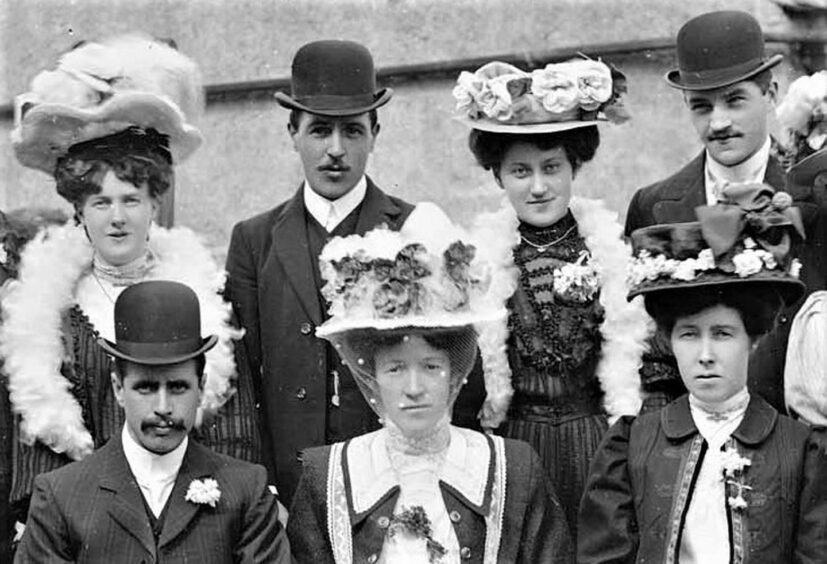
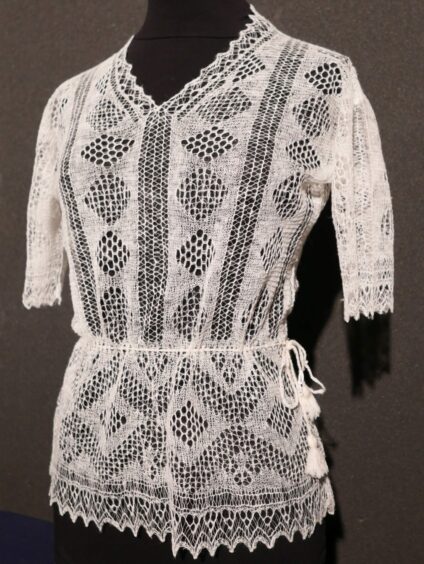
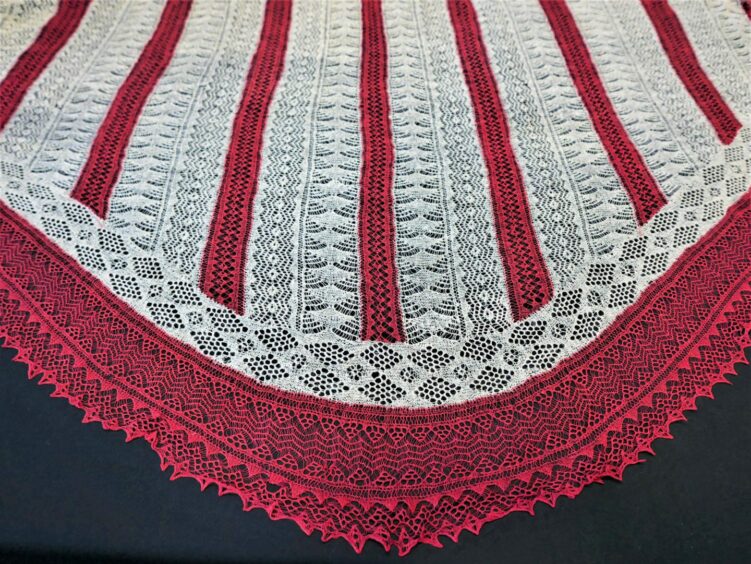
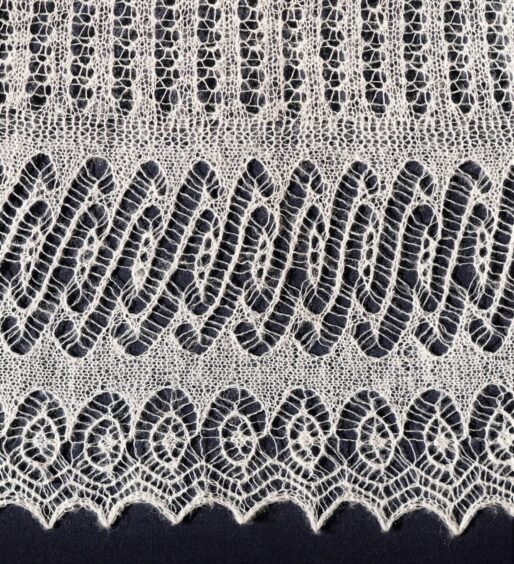
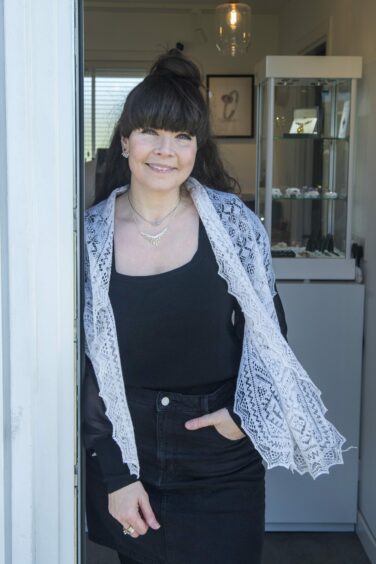
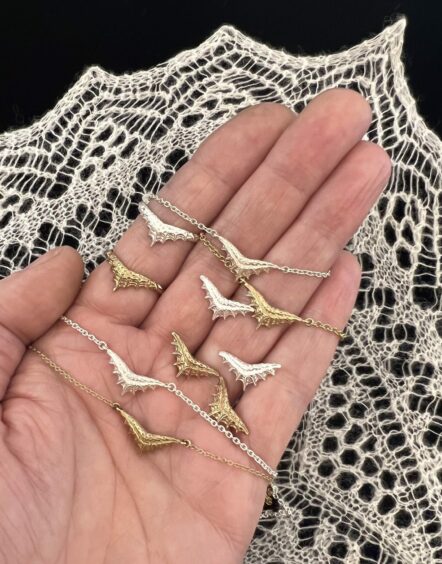
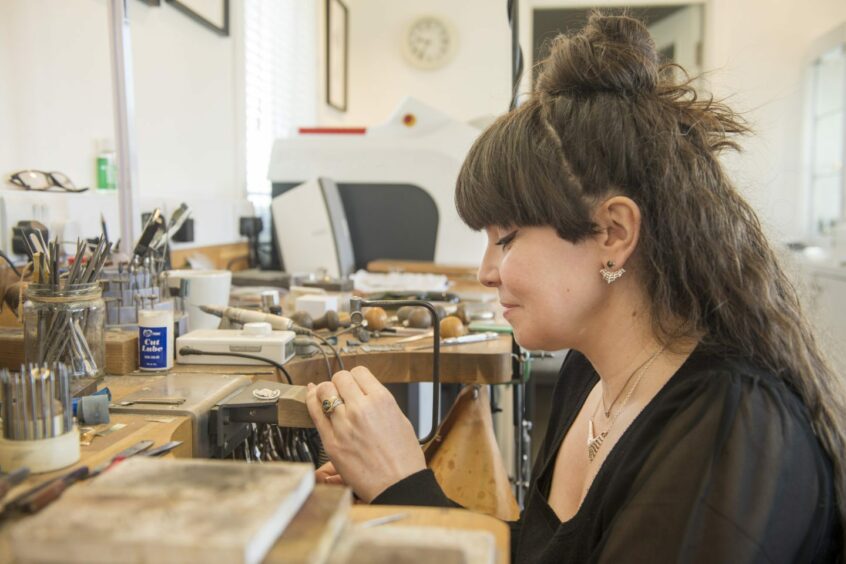
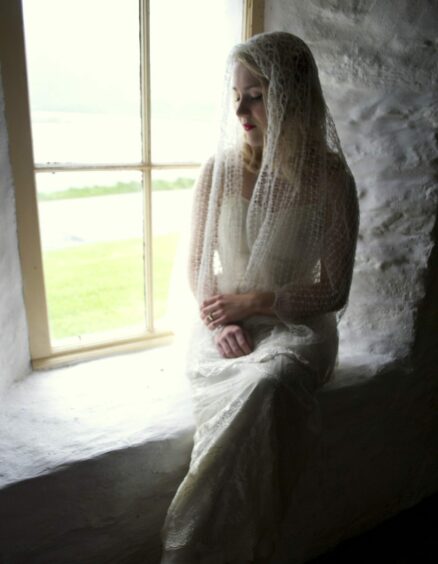
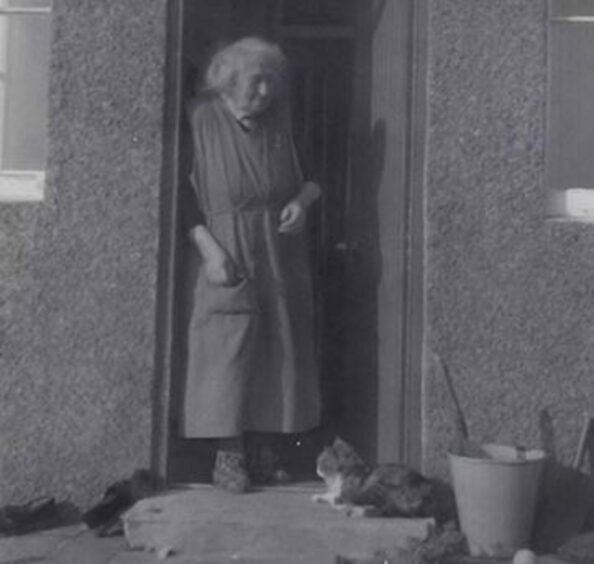
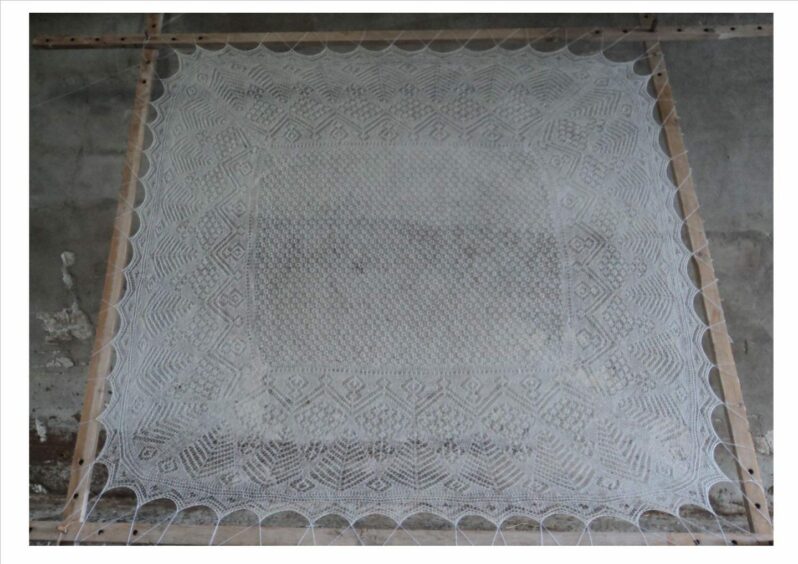
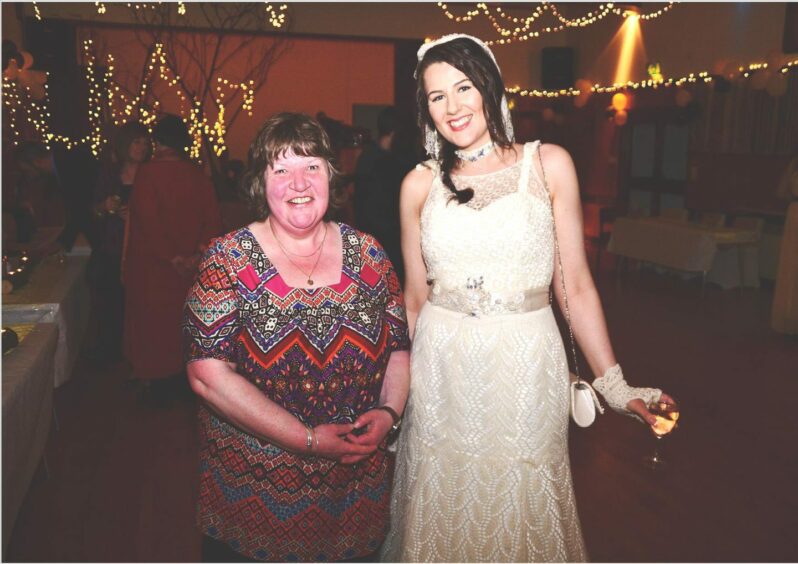
Conversation